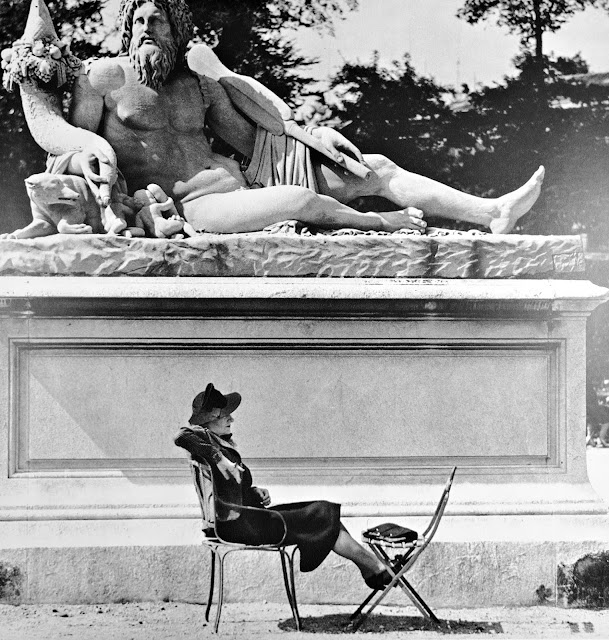 |
| Nievis, Mexican model for many painters. |
Who was your first major influence
in photography?
Mine was Fritz Henle, a
German-born American who was considered one of the greatest photographers in the
world in the 1930s through the '60s and even into the '70s. He was so
identified with the Rolleiflex twin-lens reflex camera that he was known as
"Mr. Rollei." With his TLR he took on an amazing range of
assignments: magazine photography for clients such as Life and many, many others; fashion, travel, industrial, advertising, landscape, fine art, and more.
He also produced 20 books of his photographs, beginning in 1937 with This Is Japan and culminating in 1975
with Casals.
My interest in photography began
with the birth of my son Don in the summer of 1968 with a cheap Kodak
Instamatic camera using 126 film cartridges. By spring of 1969 I had advanced
to a cheap TLR, the Ricoh 66. (Notice the repetition of the word
"cheap?" What can I say -- I was living on a private school teacher's salary!) The Ricoh died before its
time, but it had a sharp lens and negatives I made with it
still scan well.
 |
| At the Louvre, Paris, 1938 |
Speaking of scanning, during those
early months of 1969 I was scanning the photography books section of the Miami
Public Library when I came across a thin volume of photographs by Henle -- A New Guide to Rollei Photography,
published by the Viking Press of New York in 1965. Leafing through the book, I
nearly shouted for joy as many of the photographs touched me so deeply. For the
first time I began to understand what photography can be.
 |
| Texas Cowboys, 1956 |
Although I have most of Henle's
books, including some rare and valuable ones, the New Guide to Rollei Photography is the one I return to again and
again. Originally published as a compilation of monthly columns written for Popular Photography magazine in the late
1950s and early '60s, it is indeed a guide to photography with a twin-lens
reflex, or any camera for that matter. Henle's simple but complex pictures are
straightforward in technique (of which Henle was a master), yet display
classic composition, of which he was also a master.
In fact, most of what I know about
composition I learned from Henle's photographs. From him I learned to find ways
to frame my point of interest, to use leading lines to emphasize the subject,
and to balance near-far relationships. In fact, he sometimes used all three
techniques in the same photograph. And he was a constant advocate of the square
format, although he could depart from it when necessary.
 |
| Net-Thrower, Hawaii, 1951 |
"For years," he wrote,
"I have waged a small private war in defense of the square format. . .
What we learn from the twin-lens discipline is that values can be added to the picture by filling the
square. We can think of the horizontal and vertical as squares to which
something has been added at the sides
or top and bottom."
(Photographs copyright Fritz Henle Estate, 2020)
Soli Deo Gloria



















